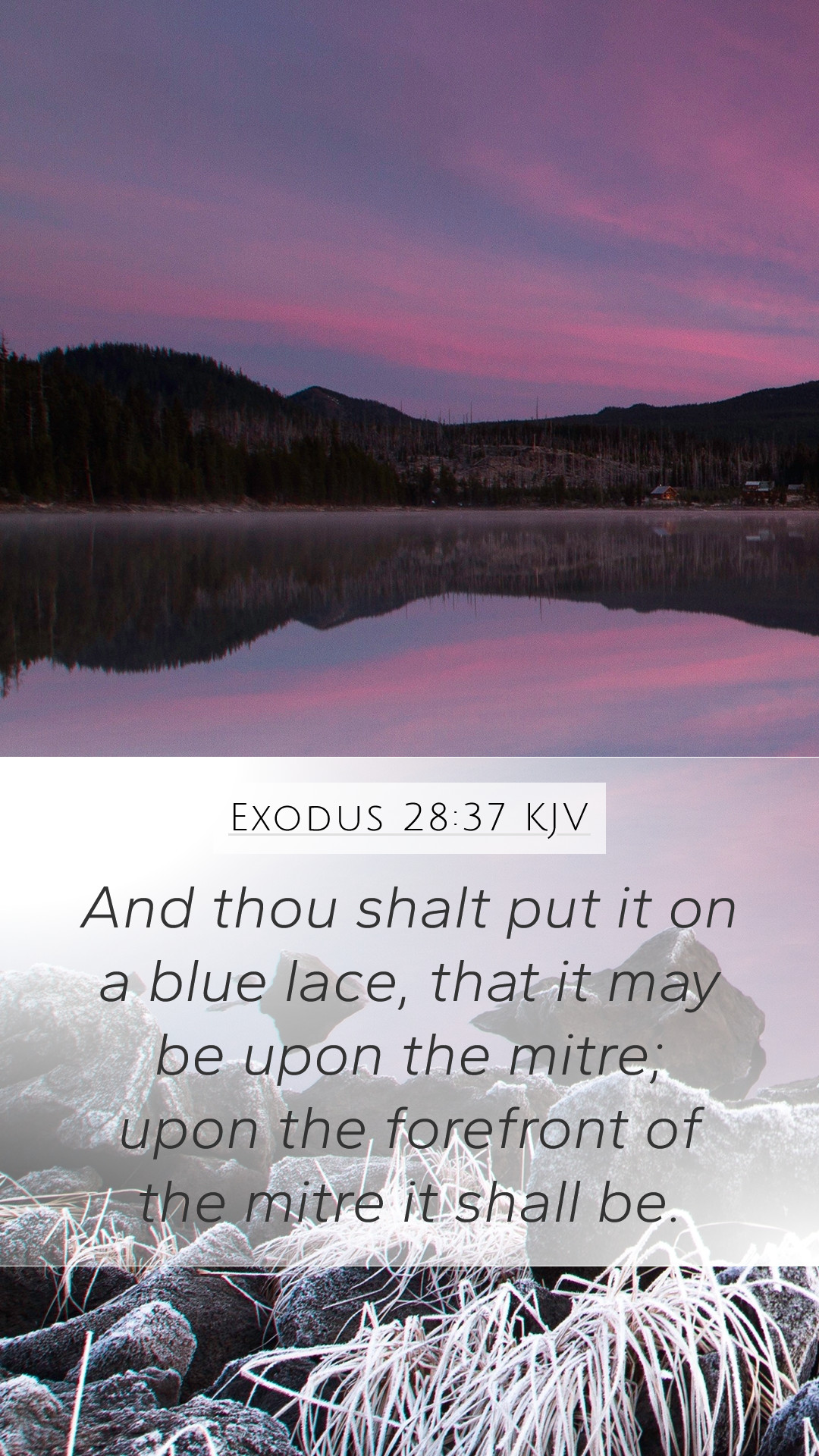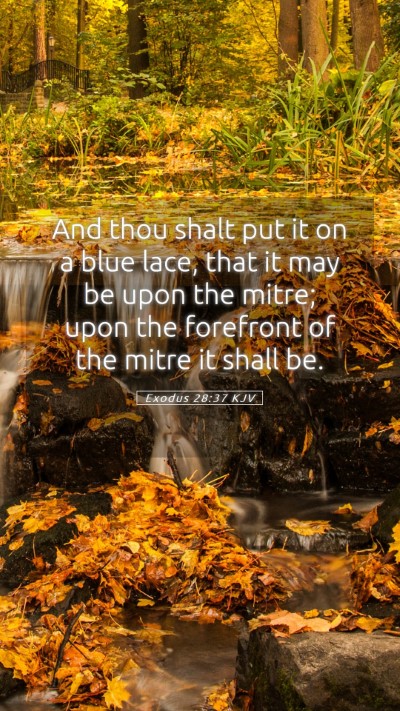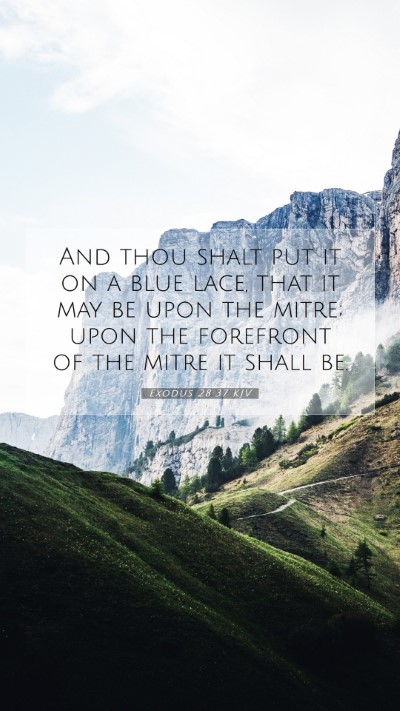Understanding Exodus 28:37
Exodus 28:37 states, "And you shall put it on a blue cord, and it shall be on the turban; it shall be on the front of the turban." This verse refers to the instruction given to the Israelites regarding the high priest's attire, specifically the turban worn by Aaron, the first high priest.
This attire represents not only the priest's role but also his relationship with God and the people of Israel. The wearing of the plate on the turban signifies an ongoing reminder of the priest's duty and the responsibility he carries as the mediator between God and His people.
Insights from Public Domain Commentaries
In this analysis, we will draw from esteemed commentaries to provide a comprehensive understanding of this verse.
Matthew Henry's Commentary
- Symbol of Holiness: Henry emphasizes that the plate signifies holiness as the priest bears the names of the tribes of Israel on his person, representing the people before God.
- Divine Remembrance: The blue cord signifies a divine connection and remembrance; the high priest continually remembers the people while in God's presence.
- Role of the High Priest: He explains that the high priest’s attire points to the importance of his mediatorial role and his representation of the nations before God.
Albert Barnes' Commentary
- Physical and Spiritual Adornment: Barnes discusses that the physical adornment of the priest points to the spiritual principles of leading a holy life while serving God and His people.
- Blue as a Symbol: In Biblical contexts, the color blue often signifies heaven or the divine; thus the cord ensures that the high priest's duties are reflective of heavenly priorities.
- Covenant Responsibility: This verse carries the weight of covenant theology where the priest embodies the covenant between God and Israel, fulfilling a commitment to represent God's interests.
Adam Clarke's Commentary
- Historical Context: Clarke elaborates on the historical relevance of the verse, delving into the significance of priestly garments in ancient Israelite culture.
- Meaning of the Cord: He highlights the use of blue cord specifically as it signifies not just physical appearance but a spiritual garment that ties the priest's identity to God’s holiness.
- Intercessory Role: Clarke notes the intercessory role of the priests as significant; their garments were a continuous reminder of their responsibility to intercede on behalf of the people.
Applications and Relevance to Today
The understanding of Exodus 28:37 can be relevant for contemporary believers in numerous ways:
- Identity in Holiness: Just as priests were called to represent God's holiness, believers today are reminded of their identity as a holy people.
- Mediators: The role of Jesus as our high priest reinforces the communal responsibility of Christians to intercede for others through prayer and acts of service.
- Covenant Community: Recognizing our connection to the Church as part of a covenant community encourages us to bear one another’s burdens.
Bible Cross References
- Leviticus 8:9 - Discusses the priestly garments and their significance.
- 1 Peter 2:9 - Connects the concept of a holy priesthood to New Testament believers.
- Hebrews 4:14 - Refers to Christ as the high priest who mediates between God and humanity.
Conclusion
Exodus 28:37 serves as a profound reminder of the roles and responsibilities of the priesthood in the Old Testament while drawing parallels to the essential calling of believers today. Through studying such verses, we deepen our understanding of Scripture, the significance of biblical teachings, and their applications in our daily lives.


